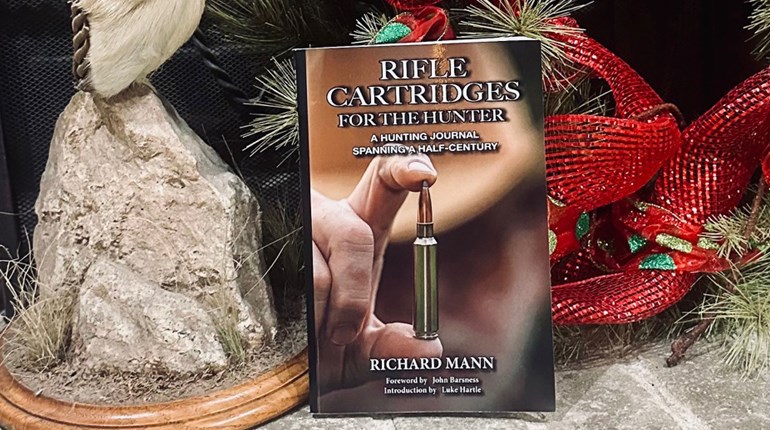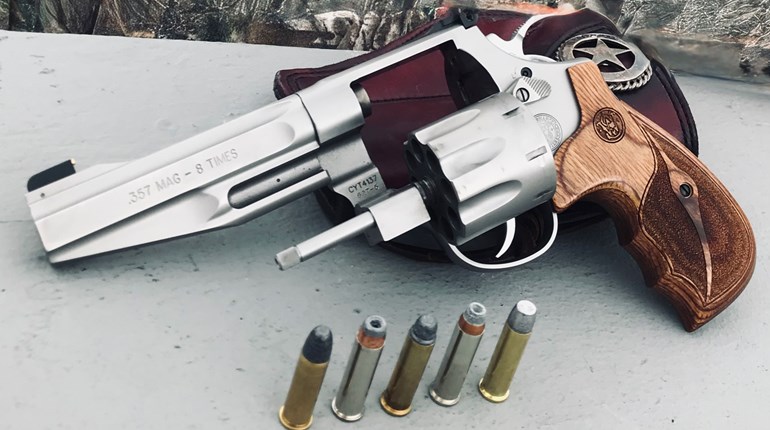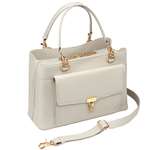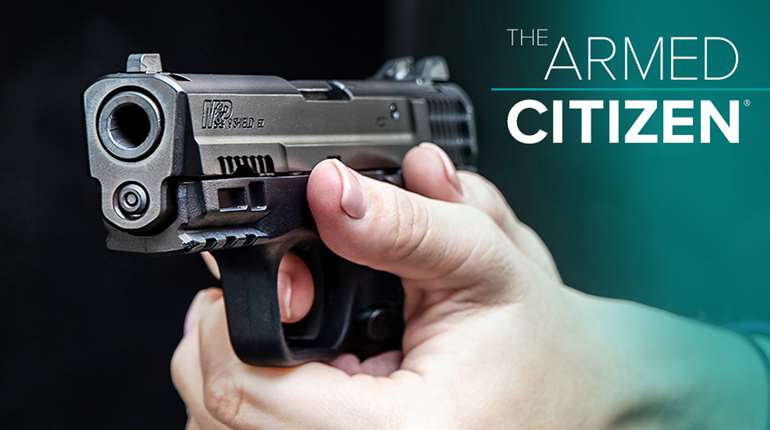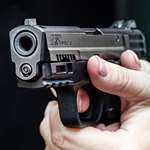
When conducting NRA Firearms Courses, there are certain topics on which I need to dedicate more time. I know that when I conduct the NRA Basic Rifle Course, I will get questions regarding trapdoor, rolling block and falling block rifles. The questions will not be centered on the types or the operation of these rifles. Rather, the questions will be much more basic. Most of my students will have a puzzled look on their faces and ask, “What are these?”
If a student likes old guns and history, he or she knows what I am talking about when I mention trapdoor rifles, rolling block rifles or falling block rifles. Unfortunately, most new gun owners are more interested in the latest and greatest innovations in firearms, not the classic guns that paved the way. Knowing and understanding these “primitive” firearms leads to the admiration of the soldiers who had to use them.
As an NRA Firearms Instructor, you cannot omit part of your lesson just because you do not understand it. It is your job to research and learn a topic well enough that you can teach it, or at least have the resources to know where to look for questions you may not be able to answer right away. These firearms have a very interesting history. Trapdoor rifles, rolling block rifles, and falling block rifles should be on every gun enthusiast’s shooting wish list!
Trapdoor Rifles
Developed in 1865, the single-shot Trapdoor rifle was the first breechloading rifle adopted by the United States military for both infantry and cavalry. Up until 1865, muzzleloading rifles were the standard issue rifle by infantry. Even before the United States was busy fighting the Civil War, European countries were developing more advanced breechloading guns capable of firing self-contained cartridge ammunition. We no sooner finished our internal conflict when we were facing a possible war with France (through Mexico) and other countries.

The Trapdoor was born out of a nation that was cash-strapped because the Union had just won the Civil War. The United States had more than 1 million serviceable muzzleloading rifle-muskets that were converted to Trapdoor firearms. Master Armorer Erskine S. Allin, of the Springfield Amory, took the muzzleloading issue rifle and removed the top of the rear of the barrel. This portion of the barrel was then refitted with a hinge so that it could be rotated up, allowing for a .50-70 self-contained cartridge to be inserted.
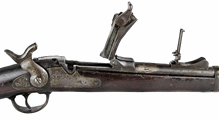
To operate a Trapdoor rifle, the hammer is cocked, or pulled, to the rear, until it is locked in place. The hinged trapdoor is rotated upward until the breech is exposed. A self-contained cartridge is then inserted into the breech. The trapdoor is then closed, locking the action in place. The firearm is now ready to discharge. To discharge, the trigger is pulled, and the hammer falls forward, striking the firing pin in the rear of the trapdoor. The hammer then falls forward, striking the firing pin, which strikes the primer of the cartridge. This begins the initial ignition that sets off the powder in the cartridge.
The Trapdoor Springfields saw service between 1865 and 1892. In 1873, the Trapdoor in .45-70 became the standard issue rifle adopted by the United States Army. The United States military failed to modernize its armament, as more advanced designs were developed. Some historians lay blame of the defeat of General Custer at the 1876 Battle of the Little Big Horn on the trapdoor rifle. The warring Indians led by Crazy Horse and Sitting Bull were partially armed with the newer superior Henry, Spencer and Winchester repeating rifles.
In 1892, the era of the Trapdoor came to an end, followed by the development of the bolt-action U.S. Krag-Jorgensen rifle in .30-40. This “modern” rifle became the new standard issue for the United States military and replaced the Trapdoor rifle, and the Krag saw the U.S. adoption of smokeless powder.
Rolling Block Rifles
Rolling Block rifles are a single-shot, breechloading rifles that shot the newly developed self-contained cartridge. This rifle was also known as the Remington Rolling Block. The Rolling Block rifle was patented in 1863 but was not developed into a workable rifle until 1866. Remington took over the patent and developed this action into rifles and handguns. These actions were referred to as the Remington Systems. Remington rolling blocks rifles were so popular that more than half the world’s armies adopted rolling block firearms.
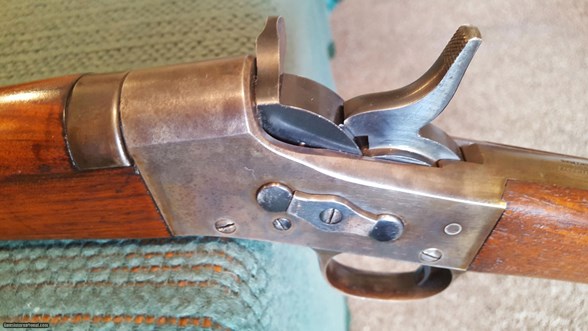
Rolling Blocks are operated by rolling a circular block to the rear, exposing the breech of the firearm. Rolling block Rifles appear to have two hammers. The actual hammer is to the rear of the action and rests on the circular block, which rests on the breech of the rifle. To access the breech to insert a cartridge, the shooter must push the hammer into the locked position. The breech lever of the Rolling Block is then rotated back against the hammer. The cartridge can now be inserted into the breech and the block is now rotated forward and is locked in place. The rifle is now ready to discharge. To discharge, the trigger is pulled, and the hammer falls forward. The hammer nose then strikes the firing pin that extends through the rolling block. The firing pin then strikes that primer of the cartridge, which starts the initial ignition that sets off the powder, sending the bullet down the barrel.
Rolling Block rifles were in service between 1866 and 1917. Rolling Block rifles became standard military issue around the world. Europe, Eastern Europe, the Middle East, and even African countries such as Egypt adopted the Rolling Blocks. General Custer is said to have carried a Remington Rolling Block while his calvary carried Trapdoor Springfields at the Battle of the Little Big Horn. Poncho Villa and his men carried Remington Rolling Block rifles when they raided Columbus, New Mexico in 1916.
Falling Block Rifles
Falling block rifles were developed before the Civil War and are single shot, breechloading rifles that fire self-contained cartridges. The most famous are the Model 1874 Sharps and the Model 1885 Winchester designed by John Browning. The block of the firearm slides up and down on vertical machined grooves in the receiver. When closed, the falling block action can easily handle big bore cartridges like the .45-70.
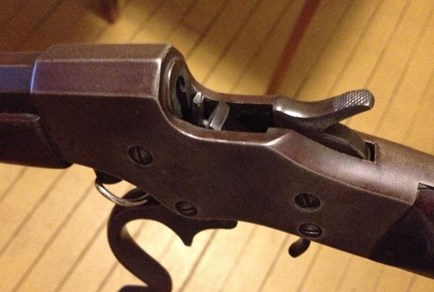 Traditional falling block rifles look like a little lever-action firearms. They are operated by first, cocking or pulling the hammer to the rear until it is locked in place—although some like the Winchester have internal hammers. The lever is opened and that drops the action down below the breech. A self-contained cartridge is then inserted into the breech. As the lever is closed, the action is raised back in place, locking the breech closed. The firearm is now ready to discharge. To discharge, the trigger is pulled, and the hammer falls forward striking the block that contains the firing pin. The firing pin then strikes the primer, which sets off the initial ignition that sets off the powder.
Traditional falling block rifles look like a little lever-action firearms. They are operated by first, cocking or pulling the hammer to the rear until it is locked in place—although some like the Winchester have internal hammers. The lever is opened and that drops the action down below the breech. A self-contained cartridge is then inserted into the breech. As the lever is closed, the action is raised back in place, locking the breech closed. The firearm is now ready to discharge. To discharge, the trigger is pulled, and the hammer falls forward striking the block that contains the firing pin. The firing pin then strikes the primer, which sets off the initial ignition that sets off the powder.
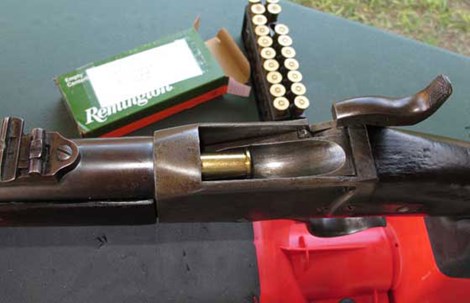
Falling block rifles were manufactured between from the 1870s through at least 1920. Reproductions of the Sharps and modern versions have the Winchesters have become quite popular. Tom Selleck sported a .45-90 falling block Sharps rifle in the movie “Quigley Down Under.” Today, falling block rifles are making a comeback. Because these rifles can handle the pressures of the .45-70 and other similar cartridges, modern falling blocks are chambered in big-bore calibers. These rifles are also the choice of many competition or long-range rifle shooters.
Many of these old rifles have and interesting and exciting history. The more you learn about these guns, the more educated your students will be. Afterall, the more interesting a topic is, the more learning takes place!













